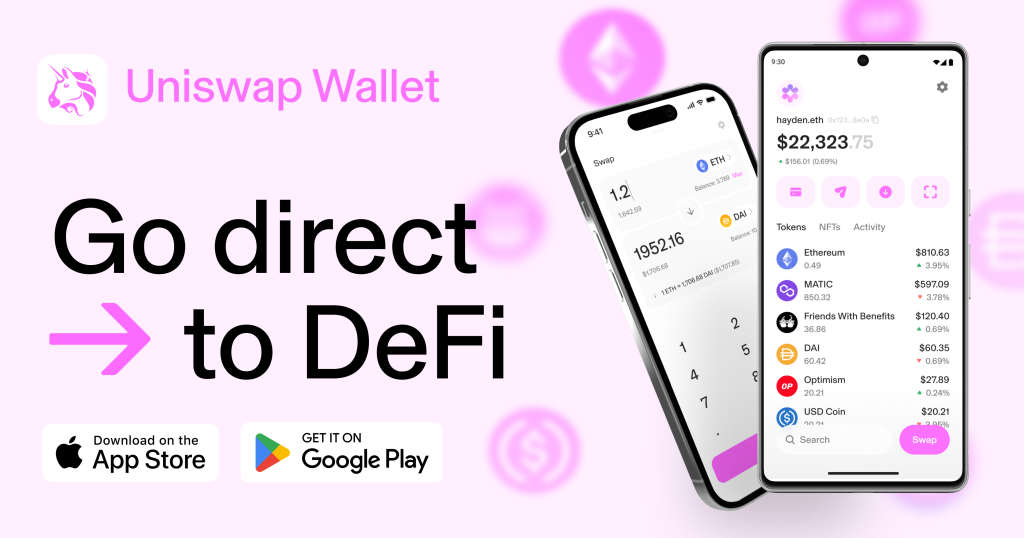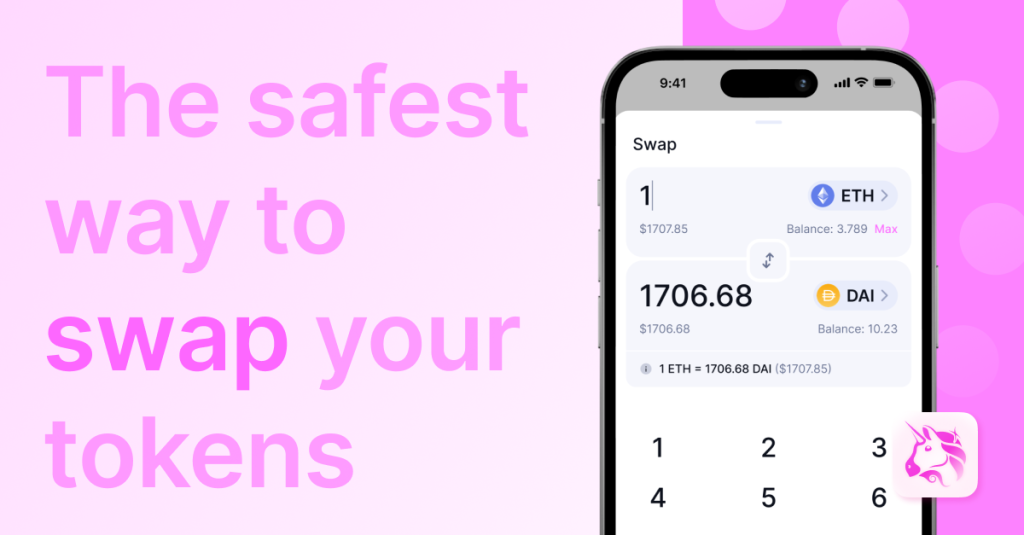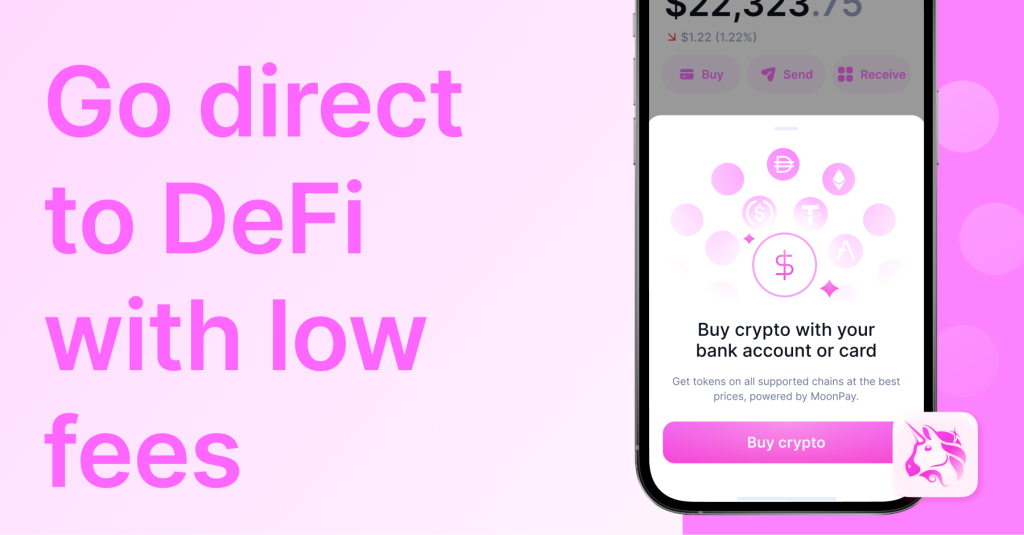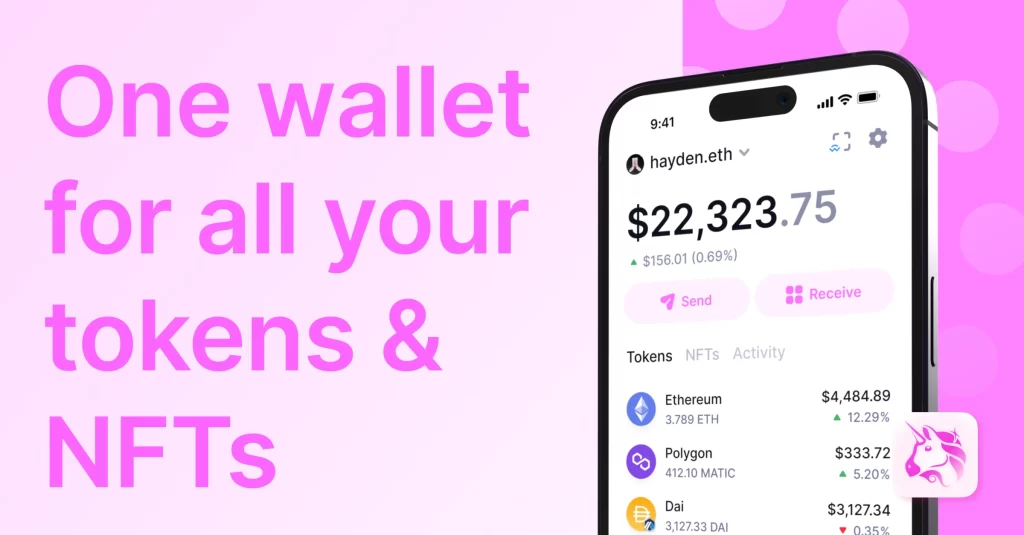
No, Uniswap is not free; it charges a 0.30% trading fee plus Ethereum gas fees.
Understanding Uniswap Fees
When using Uniswap, it’s essential to understand the different types of fees involved. These fees impact the overall cost of trading and providing liquidity on the platform.
Trading Fees
Trading fees are a significant component of the costs associated with using Uniswap.
Fee Structure
- Standard Trading Fee: Uniswap charges a 0.30% fee on all trades. This fee is automatically deducted from the transaction and distributed to liquidity providers as an incentive for supplying liquidity.
- Impact on Traders: While 0.30% may seem small, it can add up, especially for high-frequency traders. However, this fee is competitive compared to many centralized exchanges.
Distribution of Fees
- Liquidity Providers: The 0.30% trading fee is distributed proportionally among all liquidity providers in the pool. This provides an ongoing return for those who contribute to the pool’s liquidity.
- Earning Potential: For liquidity providers, the fees earned can be a source of passive income, making liquidity provision attractive despite potential risks like impermanent loss.
Gas Fees
Gas fees are another critical cost factor when using Uniswap, as they are required for executing transactions on the Ethereum network.
What are Gas Fees?
- Ethereum Network Fees: Gas fees are payments made to Ethereum miners to compensate for the computational power required to process and validate transactions. They are denominated in gwei, a subunit of Ethereum (ETH).
- Variable Costs: The amount of gas needed for a transaction can vary based on network congestion, transaction complexity, and the speed at which the user wants the transaction processed.
Factors Affecting Gas Fees
- Network Congestion: During periods of high network activity, gas fees can increase significantly. Users may choose to wait for less congested times to reduce costs.
- Transaction Complexity: More complex transactions, such as those involving multiple steps or interactions with smart contracts, require more gas and thus incur higher fees.
- Gas Price: Users can set their gas price; higher gas prices lead to faster transaction processing, while lower gas prices might result in delays.
Managing Gas Fees
- Gas Estimators: Tools like ETH Gas Station can help users estimate the current gas fees and choose optimal times to execute transactions.
- Layer 2 Solutions: Layer 2 scaling solutions, such as Optimistic Rollups and Arbitrum, aim to reduce gas fees by processing transactions off the main Ethereum chain and settling them in batches.

Using Uniswap Without Costs
While trading and providing liquidity on Uniswap incur fees, there are several ways to utilize the platform’s features without incurring any costs. This includes viewing prices and charts and accessing public data.
Viewing Prices and Charts
You can view live prices and charts on Uniswap without making any transactions, which means you can access valuable market data without spending any money.
Real-Time Price Information
- Token Prices: Uniswap provides real-time price information for a wide range of ERC-20 tokens. This allows you to monitor the market and make informed trading decisions without initiating a trade.
- Price Charts: Uniswap’s interface includes interactive charts that show the historical performance of tokens over various timeframes. You can analyze trends and patterns to better understand market movements.
Using Third-Party Tools
- Dune Analytics: Platforms like Dune Analytics offer detailed dashboards and visualizations based on Uniswap data. You can track token performance, trading volumes, and liquidity metrics without incurring any costs.
- CoinGecko and CoinMarketCap: These websites aggregate data from Uniswap and other exchanges, providing comprehensive price charts, trading volumes, and other statistics for free.
Accessing Public Data
Uniswap’s decentralized nature means that much of its data is publicly accessible. You can leverage this data for research, analysis, or personal use without any fees.
On-Chain Data
- Transaction History: You can explore transaction histories for any token or address using blockchain explorers like Etherscan. This includes details on trades, liquidity additions, and withdrawals.
- Liquidity Pool Data: Access data on specific liquidity pools, including total liquidity, trading volumes, and fee distributions. This information helps in evaluating the performance of different pools and identifying potential opportunities.
API Access
- Uniswap Subgraph: The Uniswap Subgraph, accessible via The Graph protocol, allows developers to query on-chain data using GraphQL. This can be used to build custom dashboards, perform in-depth analysis, or integrate Uniswap data into other applications.
- Public APIs: Several third-party services offer APIs that aggregate and provide Uniswap data. These APIs can be used for developing trading bots, market analysis tools, or other applications without direct costs.
Minimizing Transaction Costs
Reducing transaction costs is crucial for maximizing your efficiency when trading or providing liquidity on Uniswap. Here are effective strategies to help you minimize these costs.
Timing Your Transactions
The timing of your transactions can significantly impact the gas fees you incur. By strategically choosing when to execute trades or add liquidity, you can save money.
Monitoring Network Congestion
- Peak and Off-Peak Hours: Ethereum network congestion varies throughout the day. Gas fees tend to be higher during peak hours when more users are active. Conversely, fees are lower during off-peak hours. Tools like ETH Gas Station can help you identify these periods.
- Gas Fee Trackers: Use gas fee tracking tools to monitor current gas prices in real-time. Many wallets and Ethereum explorers provide this functionality, allowing you to execute transactions when fees are lower.
Gas Fee Estimators
- Estimate Costs: Before confirming a transaction, use gas fee estimators to calculate the expected cost. Many wallets, including MetaMask, offer built-in gas fee estimators.
- Set Custom Gas Prices: Some wallets allow you to set custom gas prices. By choosing a lower gas price, you may wait longer for the transaction to be processed, but you can significantly reduce costs.
Using Layer 2 Solutions
Layer 2 solutions are designed to handle transactions off the main Ethereum blockchain, significantly reducing gas fees and increasing transaction speed.
Optimistic Rollups
- Overview: Optimistic Rollups process transactions off-chain and then batch them onto the Ethereum mainnet, reducing the load on the mainnet and lowering gas fees.
- Integration: Uniswap is exploring integrations with Optimistic Rollup solutions like Optimism, which would allow users to trade with lower fees and faster confirmation times.
Arbitrum
- Overview: Arbitrum is another Layer 2 scaling solution that enables faster and cheaper transactions by processing them off-chain before settling them on the Ethereum mainnet.
- Using Arbitrum: To use Arbitrum, you need to bridge your assets from the Ethereum mainnet to the Arbitrum network. Once on Arbitrum, you can trade on compatible versions of Uniswap with significantly reduced gas fees.
Other Layer 2 Solutions
- zk-Rollups: zk-Rollups use zero-knowledge proofs to bundle multiple transactions into a single transaction, which is then recorded on the Ethereum blockchain. This method enhances scalability and reduces fees.
- Polygon (formerly Matic): Polygon is a Layer 2 scaling solution that offers fast and low-cost transactions. Uniswap users can bridge their assets to the Polygon network to benefit from lower fees.

Comparing Uniswap Fees to Centralized Exchanges
Understanding how Uniswap’s fees compare to those of centralized exchanges can help you make more informed decisions about where to trade. Here’s a detailed comparison focusing on fee structures and additional costs.
Fee Structures
Both Uniswap and centralized exchanges charge fees for trading, but the structures and implications of these fees differ.
Uniswap Fee Structure
- Trading Fee: Uniswap charges a flat 0.30% fee on all trades. This fee is distributed to liquidity providers as an incentive for supplying liquidity.
- Gas Fees: Transactions on Uniswap also incur gas fees, which are paid to Ethereum miners for processing transactions. These fees vary based on network congestion and transaction complexity.
Centralized Exchange Fee Structure
- Trading Fees: Centralized exchanges like Binance, Coinbase, and Kraken typically charge trading fees based on a tiered structure. Fees can vary depending on the trading volume and whether the user is a maker (providing liquidity) or a taker (removing liquidity). For example:
- Binance: Charges 0.10% for both makers and takers at the base level, with potential reductions for higher volume traders or those who use Binance Coin (BNB) to pay fees.
- Coinbase: Charges between 0.50% and 0.10%, depending on the user’s monthly trading volume.
- Kraken: Charges between 0.16% and 0.26%, with lower fees for higher volume traders.
Additional Costs
Both Uniswap and centralized exchanges have additional costs that traders should be aware of.
Uniswap Additional Costs
- Slippage: On Uniswap, slippage refers to the difference between the expected price of a trade and the actual price executed. High slippage can occur in low liquidity pools or during volatile market conditions.
- Impermanent Loss: Liquidity providers on Uniswap may experience impermanent loss, which occurs when the value of deposited tokens changes compared to holding them outside the pool.
- Gas Fees Variability: Gas fees on Uniswap can be highly variable and sometimes very high during periods of network congestion, impacting the overall cost of transactions.
Centralized Exchange Additional Costs
- Deposit and Withdrawal Fees: Centralized exchanges often charge fees for depositing and withdrawing funds. These fees can vary based on the method (e.g., bank transfer, credit card, or cryptocurrency) and the currency used.
- Conversion Fees: When trading between different cryptocurrencies or fiat currencies, centralized exchanges may charge conversion fees. These fees can add up, especially for frequent traders.
- Inactivity Fees: Some centralized exchanges charge inactivity fees if an account remains inactive for a certain period. This is less common but can affect long-term holders who don’t trade frequently.

Providing Liquidity Costs
Providing liquidity on Uniswap can be a profitable venture, but it comes with certain costs and risks that potential liquidity providers should understand. Two primary considerations are impermanent loss and earnings from fees.
Impermanent Loss
Impermanent loss is one of the main risks associated with providing liquidity to a decentralized exchange like Uniswap.
What is Impermanent Loss?
- Definition: Impermanent loss occurs when the value of tokens in a liquidity pool diverges from what their value would have been if they were simply held outside the pool. This loss is termed “impermanent” because it can potentially be reversed if the token prices return to their original values when the liquidity is withdrawn.
- Cause: Impermanent loss happens due to the automatic rebalancing of the liquidity pool. When traders swap tokens within the pool, the ratio of the tokens changes, leading to a divergence from their initial values.
Example of Impermanent Loss
- Initial State: Assume you provide liquidity to a pool with ETH and USDC, each worth $1000, for a total of $2000 in value.
- Price Change: If the price of ETH doubles, arbitrage traders will balance the pool by buying ETH and selling USDC, leading to a new token ratio.
- Loss Calculation: After the rebalancing, even though the total value in the pool might be higher, the value you can withdraw may be less than what you would have had by holding the tokens separately. The loss is “impermanent” as it only becomes permanent if you withdraw the liquidity while the price divergence exists.
Earnings from Fees
While impermanent loss is a significant risk, liquidity providers on Uniswap can earn fees that can offset this loss and potentially generate profit.
Fee Structure
- Trading Fees: Uniswap charges a 0.30% fee on all trades, which is distributed to liquidity providers in proportion to their share of the pool. These fees accumulate in real-time and can be claimed at any time.
- Compounding Earnings: The fees earned can be reinvested into the liquidity pool to compound earnings over time. This can enhance the overall return on investment for liquidity providers.
Calculating Potential Earnings
- Volume and Liquidity: The total fees earned depend on the trading volume of the pool and the amount of liquidity you provide. Higher trading volumes lead to higher fee earnings.
- Fee Proportion: If you provide 10% of the total liquidity in a pool that earns $1000 in fees per day, you would earn $100 per day from trading fees.
Real-World Example
- High-Volume Pools: Pools with popular token pairs like ETH/USDT or DAI/USDC typically experience high trading volumes, leading to substantial fee earnings for liquidity providers.
- Balancing Risks and Rewards: While high-volume pools can offer significant fee earnings, they also pose a higher risk of impermanent loss due to price volatility. Providers need to balance these factors to optimize their returns.

Uniswap and Hidden Costs
While Uniswap offers a decentralized and open trading platform, there are hidden costs associated with using it that traders and liquidity providers should be aware of. Two significant hidden costs are slippage and front-running risks.
Slippage
Slippage refers to the difference between the expected price of a trade and the actual price at which the trade is executed. It can result in higher costs for traders.
What is Slippage?
- Definition: Slippage occurs when the price at which a trade is executed differs from the price at which it was initially confirmed. This is common in fast-moving or low-liquidity markets.
- Causes: Slippage can happen due to rapid price changes, large order sizes, or insufficient liquidity in the pool to accommodate the trade at the expected price.
How to Minimize Slippage
- Set Slippage Tolerance: Most decentralized exchanges, including Uniswap, allow users to set a slippage tolerance. This specifies the maximum acceptable deviation from the expected price. Setting a lower tolerance can reduce the risk of significant slippage but may result in failed transactions if the market is volatile.
- Trade in Smaller Sizes: Breaking large trades into smaller transactions can help minimize slippage, as smaller trades are less likely to impact the market price significantly.
- Choose High-Liquidity Pools: Trading in pools with higher liquidity can reduce the likelihood of slippage, as there are more tokens available to facilitate the trade at the desired price.
Example of Slippage
- Trade Execution: Suppose you intend to swap 10 ETH for DAI at an expected price of 1 ETH = 2000 DAI. If the liquidity in the pool is low, you might end up receiving less DAI per ETH due to slippage, for example, 1980 DAI per ETH, resulting in a lower overall amount of DAI received.
Front-Running Risks
Front-running is a form of market manipulation where an attacker or bot anticipates and executes a trade ahead of a pending transaction to profit from the price movement.
What is Front-Running?
- Definition: Front-running involves placing a transaction ahead of a known pending trade to capitalize on the expected price change. This is particularly problematic in decentralized exchanges where transaction details are visible in the mempool before being confirmed on the blockchain.
- Impact: Front-running can lead to higher costs for the original trader, as the price may move unfavorably by the time their transaction is executed.
How to Mitigate Front-Running
- Use Private Transactions: Some DeFi platforms offer options for private transactions that are less visible in the mempool, reducing the risk of front-running.
- Adjust Gas Prices: Increasing the gas price can help prioritize your transaction over potential front-runners, ensuring it gets confirmed faster. However, this increases transaction costs.
- Time Transactions Strategically: Executing trades during periods of lower network activity can reduce the risk of front-running, as there is less competition for block space.
Example of Front-Running
- Attack Scenario: Suppose you submit a large buy order for a token. A front-runner detects this transaction in the mempool and submits their buy order with a higher gas fee. Their transaction gets confirmed first, driving up the token price. When your transaction is finally processed, you end up paying more due to the increased price, while the front-runner sells at a profit.

Future Developments in Fee Reduction
Uniswap is continuously evolving to reduce transaction fees and improve user experience. Key areas of focus include Layer 2 integration and protocol upgrades.
Layer 2 Integration
Layer 2 solutions aim to alleviate the scalability issues of the Ethereum network by processing transactions off-chain, thus reducing gas fees and increasing transaction speed.
Optimistic Rollups
- Overview: Optimistic Rollups handle transactions off-chain and batch them before submitting them to the Ethereum mainnet, which significantly reduces gas costs.
- Uniswap Integration: Uniswap plans to integrate with Optimistic Rollups solutions like Optimism. This will allow users to perform trades with lower fees and faster confirmation times, enhancing the overall trading experience.
Arbitrum
- Overview: Arbitrum is another Layer 2 scaling solution that processes transactions off-chain and settles them on-chain in batches. This reduces the load on the Ethereum network, lowering gas fees.
- Benefits for Uniswap Users: By integrating with Arbitrum, Uniswap can offer users significantly reduced transaction fees and quicker transaction processing. Users can bridge their assets from the Ethereum mainnet to the Arbitrum network to take advantage of these benefits.
zk-Rollups
- Overview: zk-Rollups use zero-knowledge proofs to bundle multiple transactions into a single transaction, which is then recorded on the Ethereum blockchain. This method enhances scalability and reduces gas fees.
- Potential Integration: Uniswap’s future integration with zk-Rollups could further reduce transaction costs and increase throughput, making trading more efficient and cost-effective.
Protocol Upgrades
Upgrading the Uniswap protocol itself can also help reduce fees and improve efficiency.
Uniswap V3 Enhancements
- Concentrated Liquidity: Uniswap V3 introduced the concept of concentrated liquidity, allowing liquidity providers to allocate their capital within specific price ranges. This increases capital efficiency and reduces slippage, which can indirectly reduce transaction costs for traders.
- Flexible Fee Structures: Uniswap V3 offers multiple fee tiers (0.05%, 0.30%, and 1.00%), enabling liquidity providers to choose their preferred fee level based on the volatility and trading volume of the token pair. This flexibility can help reduce trading costs for users.
EIP-1559 and Gas Fee Optimization
- Overview: Ethereum Improvement Proposal (EIP) 1559 introduced a new gas fee structure that includes a base fee and a priority fee. This upgrade aims to make gas fees more predictable and reduce volatility.
- Impact on Uniswap: The implementation of EIP-1559 can help Uniswap users by providing more stable and predictable gas fees, making it easier to estimate transaction costs and reducing the likelihood of overpaying for gas.
Future Protocol Innovations
- Decentralized Order Books: Future protocol upgrades might include decentralized order books, which could help reduce the reliance on liquidity pools and decrease slippage, indirectly lowering trading costs.
- Improved Governance Mechanisms: Enhancing governance mechanisms can lead to more efficient decision-making processes regarding fee structures and protocol upgrades, ensuring that user feedback and community interests are prioritized.